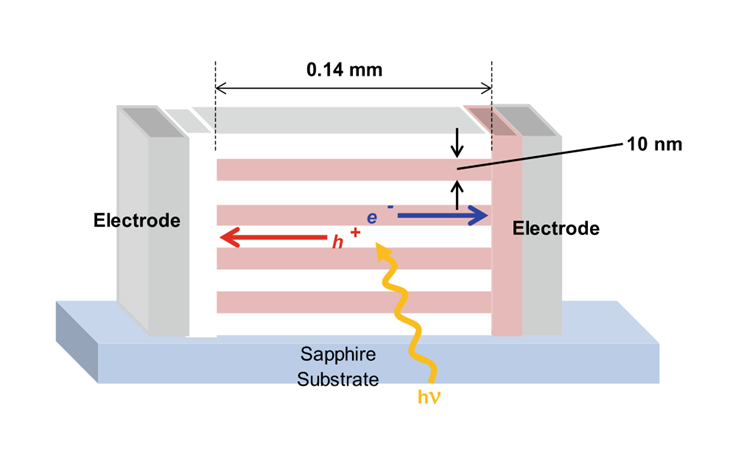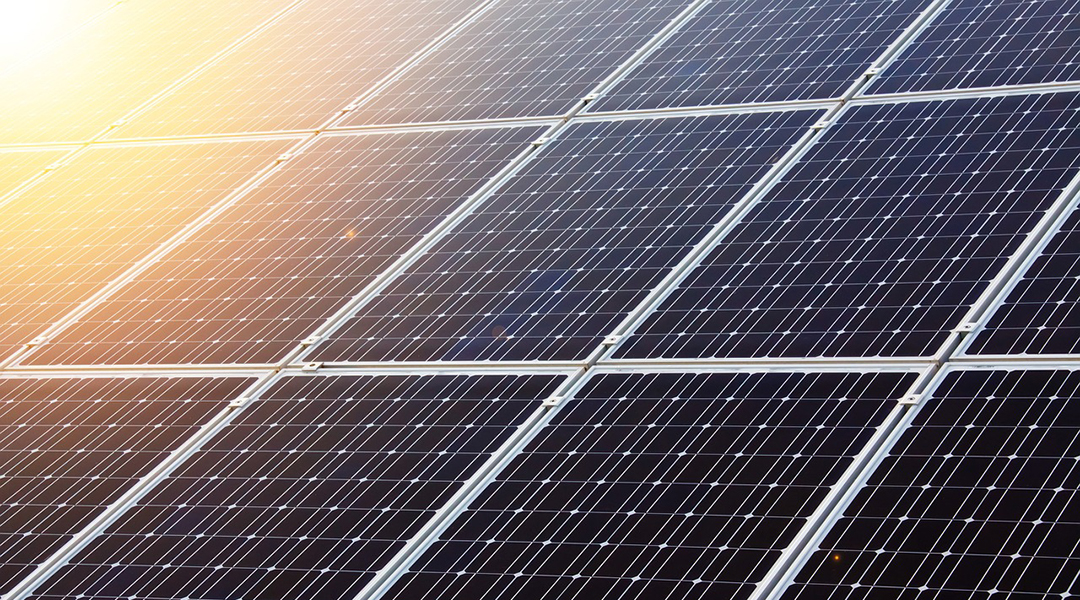Solar energy is considered one of the leading sources of cheap and renewable energy, and an essential tool to help mitigate the unfolding climate crisis. The most widely used method of converting solar energy into electricity is through solar cells, which generate an electric current when exposed to sunlight. The development of cheap, reliable, and efficient solar cells is therefore of paramount importance for the transition from fossil fuels to this clean form of energy.
Conventional solar cells are generally made using various semiconductors, materials designed to manage and control the flow of electric current in electronic devices. Organic semiconductors, materials composed mainly of carbon atoms, are so popular in this field as they are abundant in nature, affordable to process on industrial scales, and the subsequent solar cells made using them are flexible and transparent.
However, the catch is that their efficiency, specifically the rate at which they convert incoming solar light into usable energy, is limited. In addition, most organic molecules can only generate electricity when exposed to light of certain wavelengths, meaning that in order to utilize the entire solar spectrum, which includes infrared and ultraviolet radiation in addition to visible light, organic solar cells are usually built using a large number of different films, each sensitive to a fraction of the Sun’s radiation spectrum.
“Conventional organic photovoltaic cells have a sandwich structure, that is, the organic films generating the current by sunlight are vertically sandwiched between a couple of electrodes,” explained Masahiro Hiramoto, professor at the National Institutes of Natural Sciences and the Graduate University for Advanced Studies in Japan. “Namely, on the glass substrate, transparent electrode, organic films, and counter metal electrode are deposited sequentially to the vertical direction. So, the current generated by light flows in the vertical direction with respect to the substrate surface.”
As different organic semiconductors respond differently to sunlight, there is a negative impact on the design and size of the “sandwich”, which makes up what is called a tandem solar cell.
“In the case of conventional vertical organic cells, there is a strict limitation for the combination of multiple materials because the magnitude of current generated by the each different organic layers should be equal,” said Hiramoto. “This is a severe restriction for the fabrication of tandem cells.”
A lateral approach
To overcome this hurdle, researchers designed a new type of solar cell with a different electrode arrangement with respect to the film sandwich, removing any restriction on the current flowing through each film. This new design has been dubbed the lateral solar cell as the current now runs horizontally instead of vertically.
“Lateral organic photovoltaic cells have a couple of electrodes, which are deposited at the right hand and left hand side edges of organic film,” explained Hiramoto. “So, the current generated by light in the organic film flows in the lateral direction with respect to the substrate surface. This means that an infinite number of organic layers can be stacked freely without limitation for the purpose to utilize entire solar spectrum. This is a dream of solar cell scientists.”

Although this arrangement of electrodes allows for a different current in each film, it still has some drawbacks the team addressed in their study published in physica status solidi a. Typically, the thickness of the film is on the order of nanometers with a length of a few millimeters (sometimes centimeters). Therefore, electrons set in motion by incoming light have to travel a much greater distance to reach the electrodes in lateral solar cells compared to conventional vertical ones.
This difference in the distance makes the cell more sensitive to the concentration of electrons, and to such property of the material as the electron mobility or how fast they move through the film.
“The possible distance of current flow in organic films has been limited to several hundred nanometers due to their low mobility,” added Hiramoto. “Therefore, we could only fabricate vertical cells since the distance of current flow is equal to the film thickness (distance between two electrodes), that is, less than 1 micrometer. However, since organic materials having very high mobility have recently been developed, possible distance of current flow in organic films increased to millimeter order. So, now lateral organic solar cell becomes easier to fabricate.”
Doping to improve efficiency
In order to improve the existing lateral solar cell designs, Hiramoto and his colleagues added deliberate impurities to the organic materials, a process called doping. The interactions between the semiconductor and the intentional impurities leads to an increase in the number of free electrons that can be used to generate an electric current.
The scientists worked with a sandwich consisting of two 100-nanometer-thick films of organic semiconductors known as C8-BTBT and PTCDI-C8. The former was doped with molecules of F4TCNQ, and the latter with Cs2CO3, which are good donors of electrons.
“Doping, that is, adding the small amount of impurities which donate or accept the electrons from the organic layers, result in the electron rich and poor organic layers,” explained Hiramoto “As a result, current generation is enhanced and the performance of organic solar cell is improved.”
The researchers experimented with the amount of impurities added to organic films and studied their effect on current generation. As a result, they found optimal doping levels that almost doubled the electric current generated by the incident light in their lateral solar cells.
The proof-of-concept solar cells were only a fraction of a millimeter in size, and more work is needed before this can be scaled up and put into practice. However, the scientists say they hope that advances in materials science will make this feasible in the coming years.
“Progress in the field of organic [compounds] is so rapid,” said Hiramoto. “A lot of high mobility organic [materials], which allows the current flow above centimeter order distance, would be developed within 10 years. After that, the present new organic solar cell could be put into practice.”
Reference: Jaseela Palassery Ithikkal, Seiichiro Izawa, Masahiro Hiramoto, Doped Lateral Organic Photovoltaic Cells, physica status solidi a (2023), DOI: 10.1002/pssa.202300108
Feature image credit: PublicDomainPictures on Pixabay

















